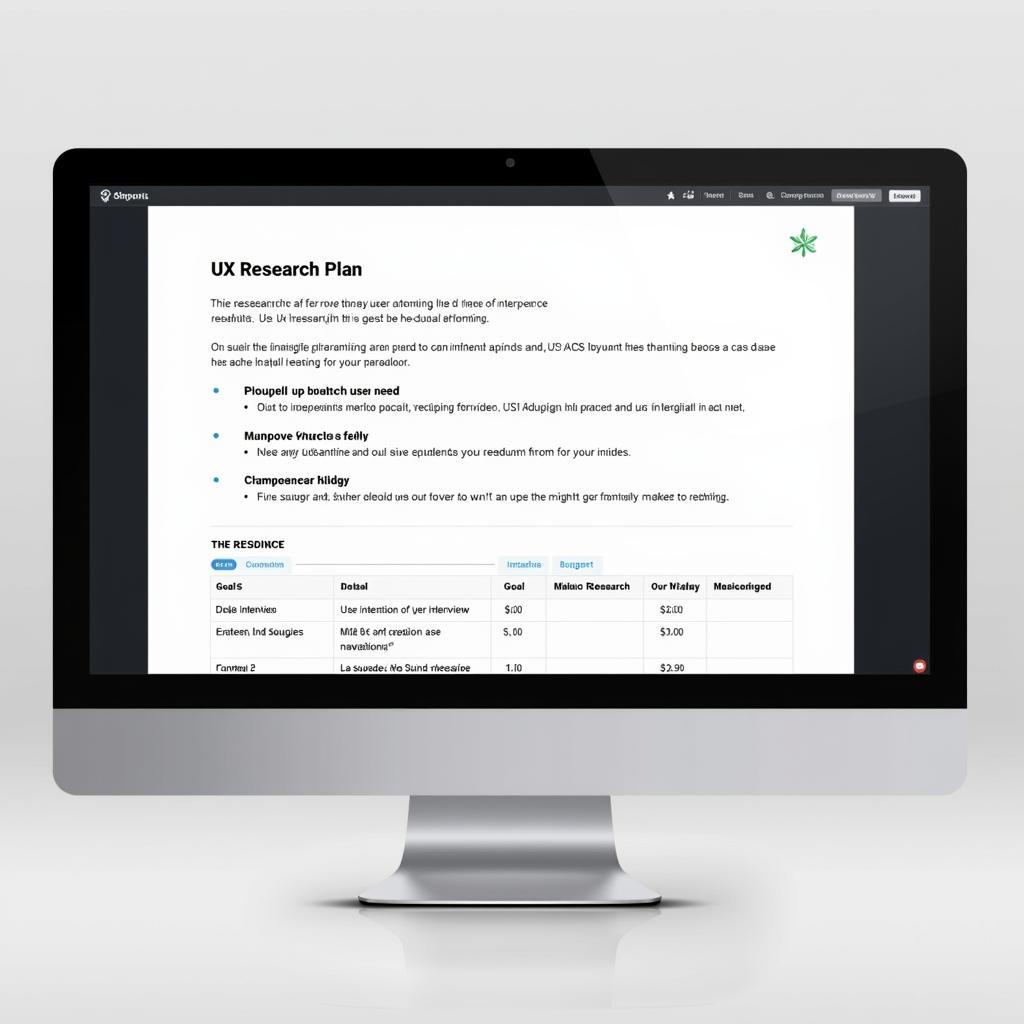A well-structured Plan Of Research Example is the cornerstone of any successful investigation, whether you’re exploring the mysteries of the paranormal or delving into the intricacies of the human psyche. It provides a roadmap, guiding your exploration and ensuring a systematic approach to uncovering the truth.
Understanding the Importance of a Research Plan Example
Why is a plan of research example so crucial? Simply put, it helps you stay focused and organized. It allows you to identify potential pitfalls, refine your methods, and ultimately, strengthen the validity of your findings. A solid plan also allows for easier collaboration amongst researchers, ensuring everyone is on the same page. Having a clear research planning example can streamline your investigation.
What Should a Research Plan Include?
A comprehensive research plan should include several key components:
- Research Question: This is the central question your investigation seeks to answer. It should be clear, concise, and focused. For example, “Is there evidence of paranormal activity at the abandoned Blackwood Manor?”
- Literature Review: Exploring existing research provides context, identifies gaps in knowledge, and informs your methodology. This step is critical for avoiding redundant work and building upon previous discoveries.
- Methodology: This section details the methods you’ll use to collect and analyze data. Will you conduct interviews, use recording equipment, or employ experimental techniques? A well-defined methodology ensures the reliability and replicability of your findings. Looking at an example of a research plan can be incredibly helpful here.
- Timeline: A realistic timeline helps you stay on track and manage your resources effectively.
- Budget: Consider the costs associated with equipment, travel, and other resources.
Different Types of Research Plans: Choosing the Right One
Just as there are different types of paranormal phenomena, there are different types of research plans. Choosing the right one depends on the nature of your investigation. A quantitative research plan focuses on numerical data and statistical analysis, while a qualitative research plan explores subjective experiences and interpretations. A mixed methods approach combines both quantitative and qualitative techniques. For instance, an example of a mixed methods research question would be, “Does the frequency of reported paranormal activity correlate with the emotional state of the witness?”
Crafting a Research Plan Example for a Science Project
A research plan example for science project focusing on EVP (Electronic Voice Phenomena) might involve setting up recording equipment in a supposedly haunted location and analyzing the recordings for anomalous sounds. A UX research plan example, however, would involve a very different approach.
“A good research plan is like a good ghost hunting kit – you need the right tools for the job,” says Dr. Amelia Hayes, a renowned parapsychologist. “Without a clear plan, you’re just wandering in the dark, hoping to stumble upon something interesting.”
 UX Research Plan for a Paranormal Website
UX Research Plan for a Paranormal Website
Applying Research Planning to UX Design: A UX Research Plan Example
Even in the seemingly unrelated field of User Experience (UX) design, a structured research plan is crucial. A ux research plan example might involve testing the usability of a paranormal investigation website or app. This could involve gathering user feedback through surveys and interviews, analyzing user behavior through website analytics, and conducting A/B testing to optimize design elements.
Professor Edgar Vance, a leading expert in UX research, emphasizes the importance of planning: “A well-defined research plan ensures that you gather relevant data and answer the right questions. It’s the foundation upon which you build a successful product.”
In conclusion, a well-crafted plan of research example is essential for any investigation, from exploring the unknown realms of the paranormal to optimizing the user experience of a website. It provides a framework for systematic exploration, ensures the reliability of findings, and maximizes the chances of success. By following the guidelines outlined in this article, you can develop a robust research plan that will guide your investigations and help you unlock the secrets of the universe, one question at a time.
FAQ
- What is the purpose of a research plan?
- What are the key components of a research plan?
- What are the different types of research plans?
- How do I choose the right research plan for my project?
- Why is a research plan important for paranormal investigations?
- How can I create a research plan example for a science project?
- What is a ux research plan example?
Need help with your research? Contact us at Phone Number: 0904826292, Email: research@gmail.com or visit us at No. 31, Alley 142/7, P. Phú Viên, Bồ Đề, Long Biên, Hà Nội, Việt Nam. Our team is available 24/7 to assist you.